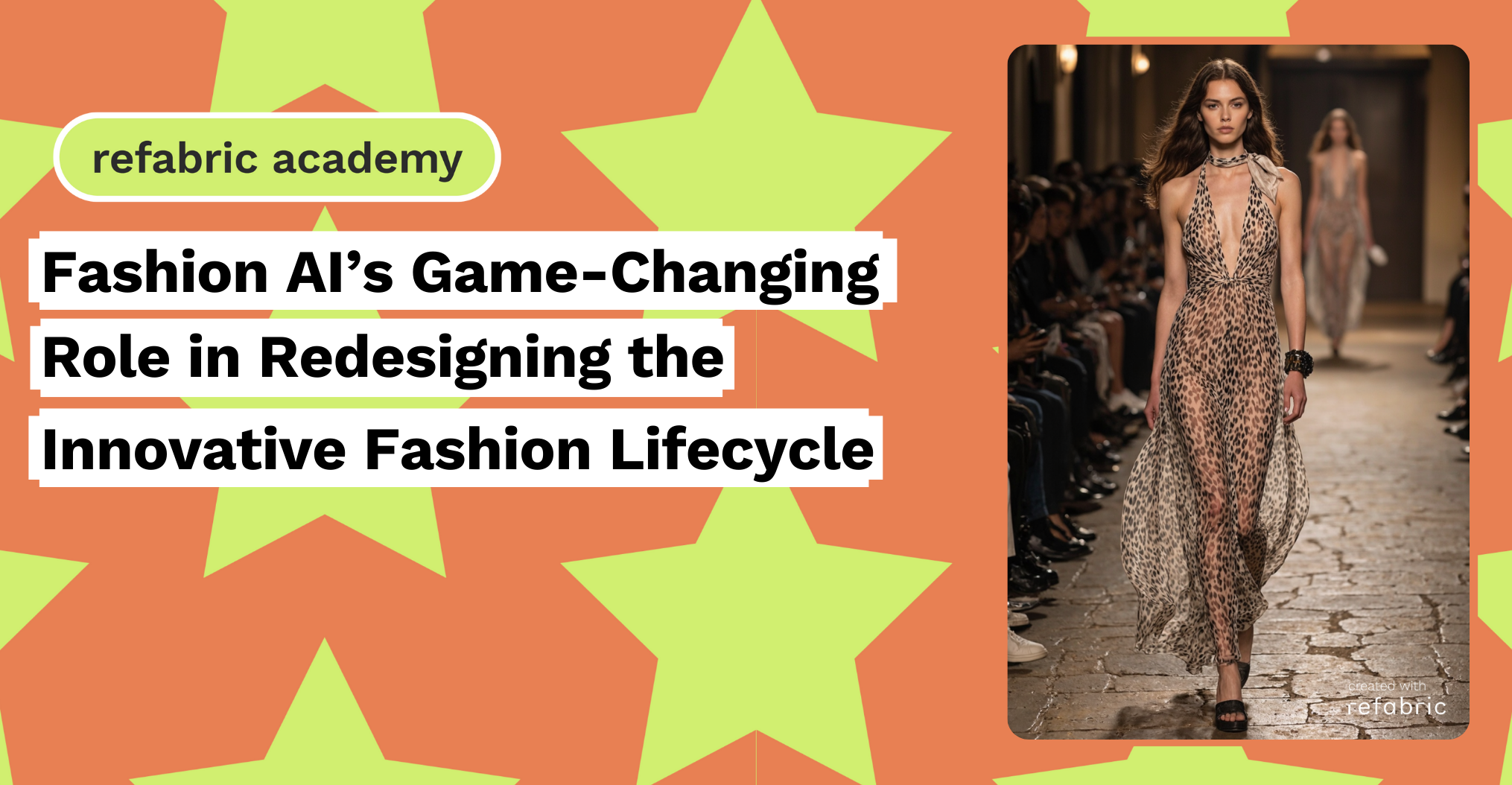Fashion AI is no longer just a tool for trend forecasting or virtual try-ons, it is reinventing the entire fashion lifecycle, from ideation and design to production, distribution, and customer experience. By embedding intelligence at every stage, fashion AI is making the industry smarter, faster, and more sustainable, while empowering designers and brands to reimagine what’s possible. What once required months of planning and endless trial-and-error can now be streamlined into a process that balances creativity with precision.
AI-driven systems help identify emerging consumer demands before they peak, ensuring that collections are always timely and relevant. At the same time, automation reduces inefficiencies that have long challenged the industry, from wasteful sampling to unpredictable logistics. This integration of technology doesn’t replace the artistry of fashion, it enhances it, giving professionals the freedom to focus on bold ideas while AI handles the heavy lifting behind the scenes.
Fashion AI at the Design Stage
Traditionally, design begins with inspiration and sketching, often requiring multiple iterations before reaching a final collection. With fashion AI, this process becomes exponentially more efficient. Generative AI platforms can analyze cultural trends, past collections, and consumer preferences to suggest patterns, silhouettes, and color palettes. Designers can experiment virtually with hundreds of variations, cutting down on the need for physical prototypes.
The result is not just speed but creative freedom, fashion AI allows designers to focus on vision while the technology handles repetitive tasks, ensuring every collection is both innovative and consumer-relevant.
Smarter Manufacturing with Fashion AI
Once designs are approved, AI extends its influence into manufacturing. Intelligent systems optimize fabric selection, cutting techniques, and resource allocation to reduce waste. AI-driven automation ensures that factories can scale production quickly while maintaining consistency and quality.
For brands, this translates into lower costs and shorter lead times. For the planet, it means less overproduction, minimized waste, and reduced energy consumption, an essential step toward a more sustainable fashion industry.
Revolutionizing Supply Chains and Logistics
Fashion supply chains are notoriously complex, often involving multiple countries and countless moving parts. Fashion AI brings order to this complexity by predicting demand, managing inventory, and tracking logistics in real time.
Advanced predictive models can anticipate which products will sell in specific regions, ensuring stock levels are balanced and reducing the problem of unsold inventory. AI systems can also reroute shipments instantly when disruptions occur, keeping the flow of goods efficient and reliable.
Enhancing Retail and Customer Experience
The consumer end of the fashion lifecycle is where fashion AI shines brightest. Personalized recommendations, AI-powered virtual try-ons, and tailored size suggestions are making shopping more engaging and accurate. By analyzing purchase history, social media behavior, and even body scans, AI ensures that shoppers find pieces that reflect their style and fit perfectly.
This personalization not only delights customers but also reduces returns, which has a massive impact on sustainability and profitability. Every correctly-sized purchase represents less shipping, fewer returns, and happier customers.
Smarter, Greener Fashion
Sustainability is now at the heart of the fashion conversation, and AI plays a vital role in driving change. From reducing overproduction to simulating garment designs digitally, fashion AI helps minimize the industry’s environmental footprint. AI can even analyze the carbon cost of specific fabrics, recommending eco-friendly alternatives that align with brand values.
By creating more circular production systems where garments are designed with recycling and reuse in mind, AI enables fashion to shift from a linear “produce-consume-discard” model to a closed-loop lifecycle.
The Future: An AI-Driven Fashion Ecosystem
Looking ahead, fashion AI will continue to expand its role, moving from being a support tool to acting as a true collaborator. Imagine collections designed entirely through AI-driven sustainability goals, or digital twins of garments that allow customers to preview wear and care long before purchase.
The power of fashion AI lies in its holistic impact, it doesn’t just improve one part of the cycle, it redesigns the entire ecosystem. From ideation to end-of-life recycling, AI ensures that the industry operates smarter, greener, and more creatively.
